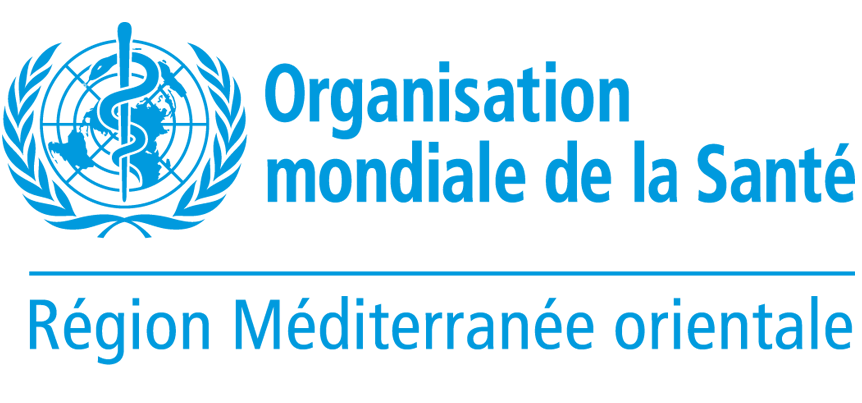Overcoming barriers to health care access in the West Bank with mobile clinics
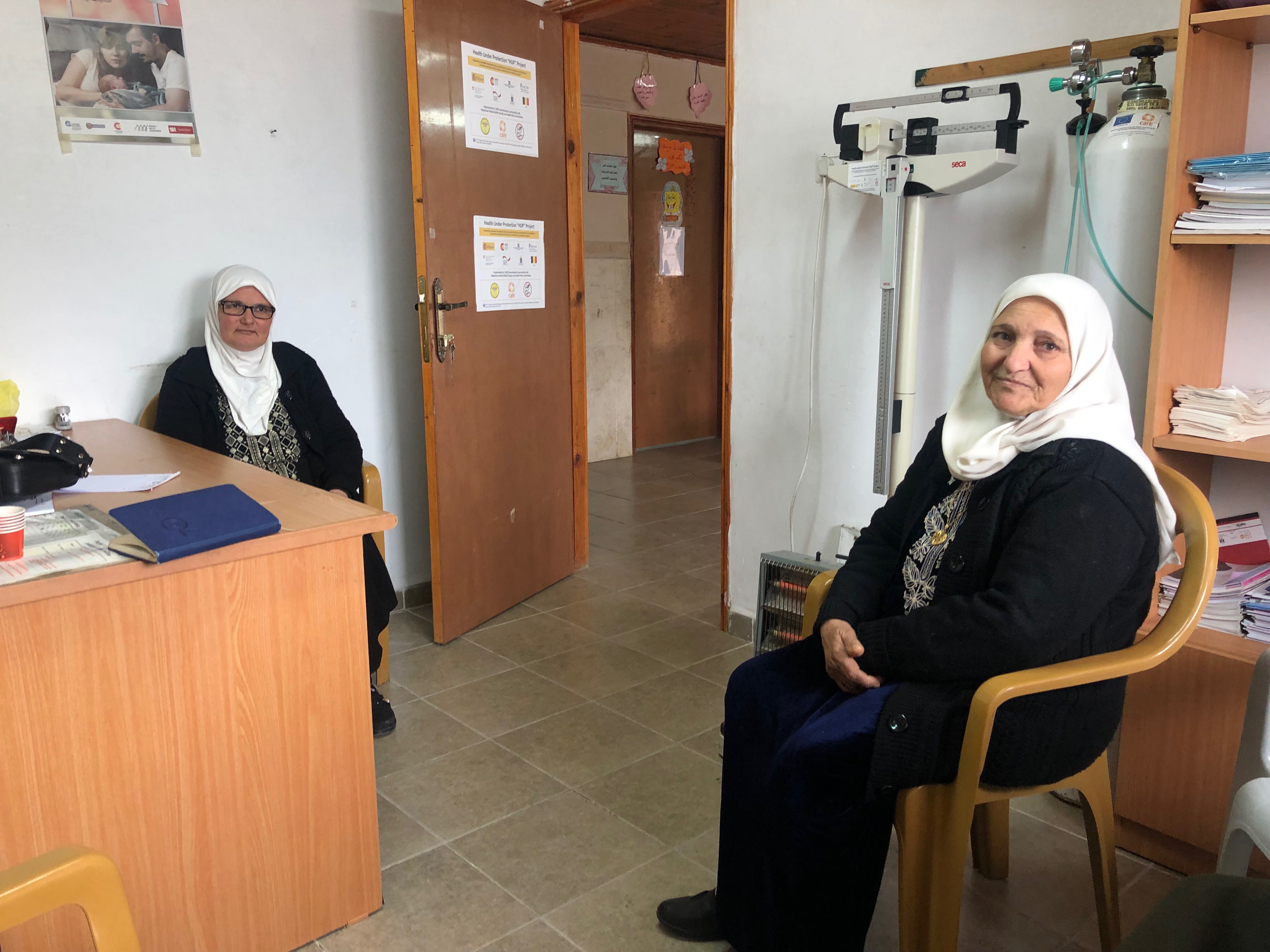 Women from Zakariah village. Credit:WHO27 May 2019 - A small room in an improvised school in Zakariah village, the West Bank, occupied Palestinian territory, used to serve as a patient consultation space for a mobile clinic providing primary healthcare services in the area. Last year, the clinic stopped operating due to a lack of funding, leaving a community of 650 without access to essential health care.
Women from Zakariah village. Credit:WHO27 May 2019 - A small room in an improvised school in Zakariah village, the West Bank, occupied Palestinian territory, used to serve as a patient consultation space for a mobile clinic providing primary healthcare services in the area. Last year, the clinic stopped operating due to a lack of funding, leaving a community of 650 without access to essential health care.
Since then, to get even basic health services, Zakariah residents have to travel to a health clinic in Bethlehem – about 12 kilometres from the village. The distance, however, is not the biggest barrier for the community to access the health care they need. A journey to the town is costly, time-consuming and frequently stressful. The villagers need to pass through a number of checkpoints which makes access often unpredictable and at times heavily restricted. Zakariah is surrounded by settlements that hamper free movement for the community. It is not safe for residents to leave the village on foot, meaning that they need a car to reach Bethlehem. The majority does not have a car and there is no public transport, so many in the community rely on the only taxi driver in the village to reach health facilities for appointments.
“It’s very hard for the villagers to see a doctor,” says Zakariah’s community leader. He is the first person people come to in cases of emergency. “When there is a case that requires urgent medical attention, I am looking for ways to either reach the hospital in Bethlehem or bring an ambulance to the village, but these trips can sometimes take hours.” But in emergency situations, any delay in care can have serious adverse consequences on patient outcomes. A woman from the community took first aid training from the mobile team to ensure immediate assistance is available. She can also provide non-prescription medication to reduce fever and pain as a temporary measure.
Zakariah village is among 100 communities or so with about 114,000 residents in Area C* that have limited or no access to primary healthcare services. The geographical, legal and administrative fragmentation of the West Bank creates barriers for them to access health, but these obstacles are particularly severe for those in Area C. Like in Zakariah, many communities rely on mobile health clinics to get primary health care.
A team of two general practitioners, a women’s health specialist and a nurse used to visit Zakariah village twice a month offering free consultations, medication and providing basic health services such as screening for noncommunicable diseases, immunization, women health services, lab analysis and health education.
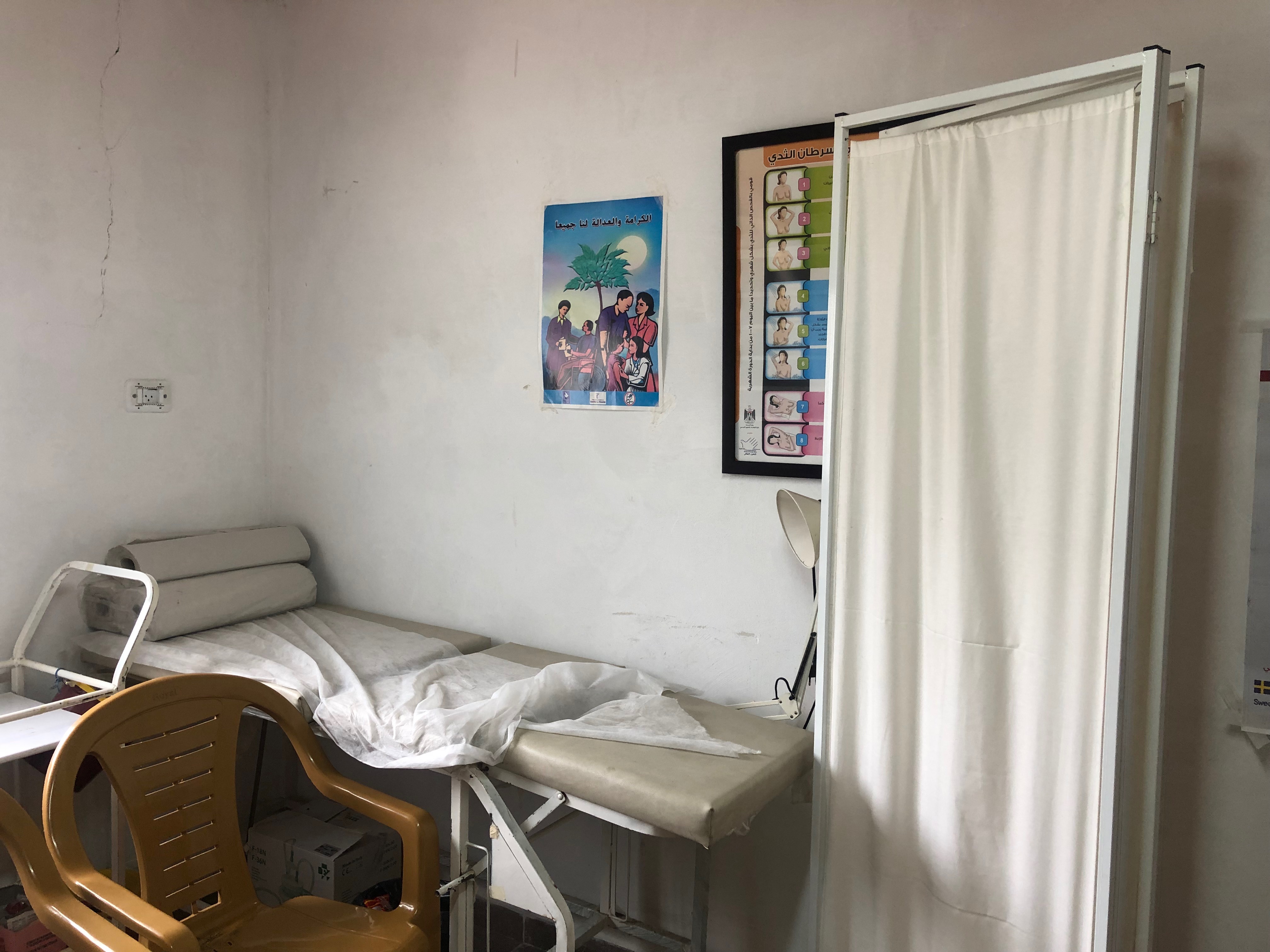 A room that used to serve as a patient consultation space for a mobile clinic providing primary healthcare services. Credit:WHONow, people from the village only go to the hospital when there is an urgent need, such as for childbirth or in the case of injury. This situation can be particularly worrisome for the elderly, who make up much of Zakariah’s community, with hypertension, diabetes and other chronic diseases that require regular checkups, medical attention and daily medication.
A room that used to serve as a patient consultation space for a mobile clinic providing primary healthcare services. Credit:WHONow, people from the village only go to the hospital when there is an urgent need, such as for childbirth or in the case of injury. This situation can be particularly worrisome for the elderly, who make up much of Zakariah’s community, with hypertension, diabetes and other chronic diseases that require regular checkups, medical attention and daily medication.
“My husband died from kidney failure, and I have diabetes and blood pressure,” says Hajra, a 65-year-old woman from the community. “I have to pay for medicine from my pocket, and it’s often half of my monthly income.”Many of Hajra’s neighbours cannot afford medicine at all.
Mobile clinics offer viable options to improve access to primary health care for such vulnerable and remote populations. Currently, the Palestinian Ministry of Health and health partners are reaching around 140,000 people in Area C, the West Bank. To deliver health care to underserved areas, the World Health Organization with its partner CARE International supports the provision of quality primary healthcare services through mobile clinics to about a further 12,000 people in 19 vulnerable communities in Hebron, Bethlehem and the North Jordan Valley areas. In addition to essential health services, the teams will also be providing psychosocial support to the populations. This project is possible thanks to the contribution from the UN Central Emergency Response Fund.
A director of Zakariah’s school said the mobile clinic services went beyond health care and had an overall positive impact on the community: “They were bringing a feeling of safety and normality to our people devastated by a lack of security, movement restriction, constant pressure and stress.”
*Over 60% of the West Bank is considered Area C, where Israel retains near exclusive control, including over law enforcement, planning and construction.
Health attacks continue during Gaza’s Great March of Return
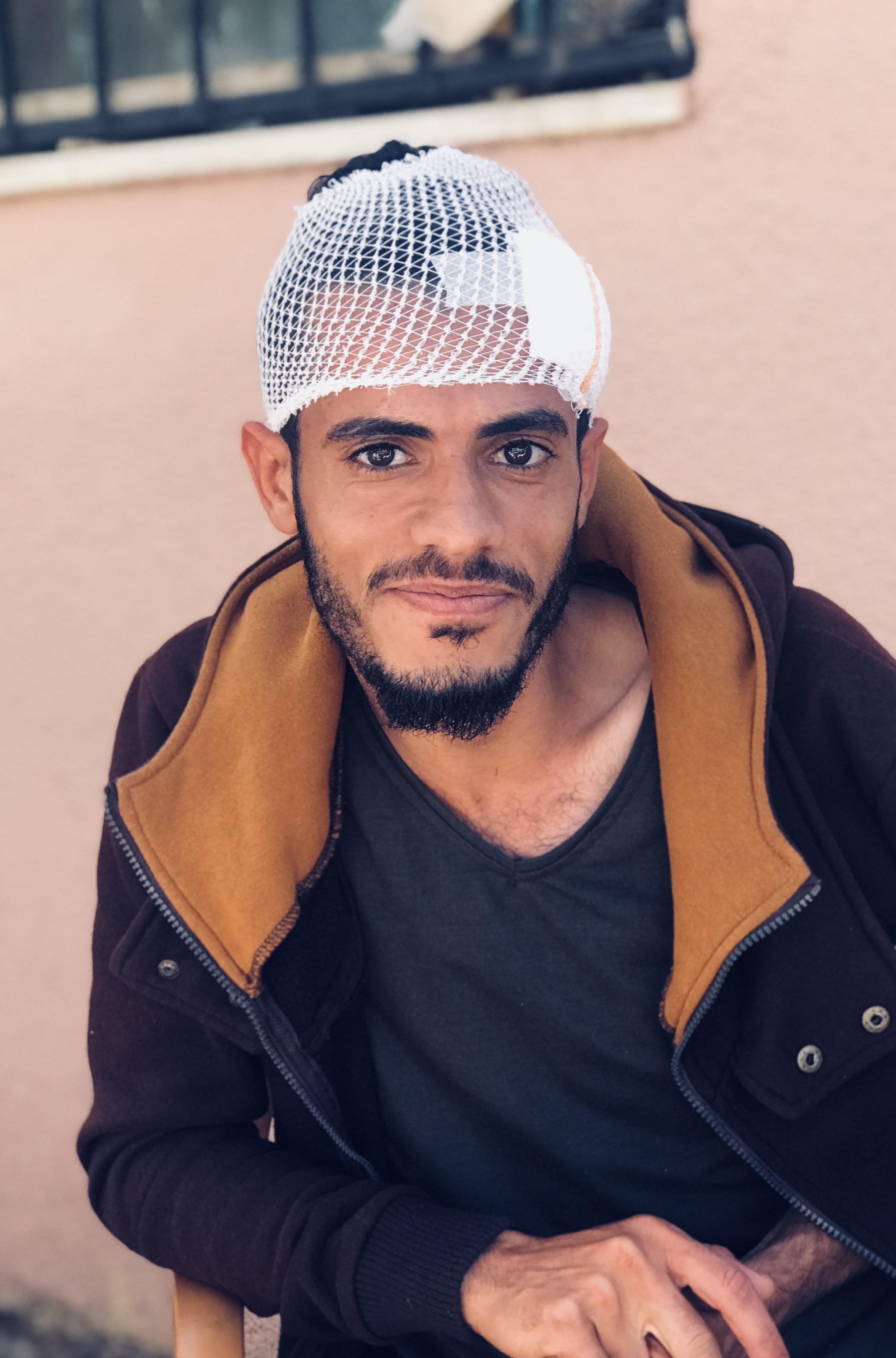 Mohamed Abu Taema. Credit: WHO20 May 2019 – Mohamed, a 24-year-old first responder, was injured during demonstrations in Khan Younis, Gaza, on Friday 10 March. He had seen a child of approximately 12 years injured from gas inhalation near the Gaza fence, and had gone forward to treat him and bring him to the nearby medical point of the Ministry of Health:
Mohamed Abu Taema. Credit: WHO20 May 2019 – Mohamed, a 24-year-old first responder, was injured during demonstrations in Khan Younis, Gaza, on Friday 10 March. He had seen a child of approximately 12 years injured from gas inhalation near the Gaza fence, and had gone forward to treat him and bring him to the nearby medical point of the Ministry of Health:
“I went forward and carried him back [away from the Gaza fence]. Then I stopped at a distance of 150 metres with my colleague to provide first aid to the child. After we had finished, I stood and was hit by a gas canister on the left side my forehead. They took me to the medical point and then transferred me by ambulance to the European Gaza Hospital. I lost consciousness in the ambulance on the way to hospital.”
He sustained a fracture and bleeding into his skull, needing 5 stitches in his head and admission to hospital for investigations and observation.
Mohamed is one of 35 first responders volunteering with Watan medical team. The team was established at the start of the Great March of Return demonstrations on 30 March 2018. Mohamed joined the team in August 2018, after an intensive course on the provision of first aid in the field.
WHO met Mohamed on Monday 13 May, when he was being discharged from the European Gaza Hospital. His colleagues from Watan team had come to help him. Gaza volunteers work at great personal risk to treat injured persons. Since demonstrations as part of Gaza’s Great March of Return began on 30 March 2018, until the end of April 2019, 3 health workers have been killed and 745 injured in 462 recorded incidents against health staff and facilities.
This is Mohamed’s fourth injury from a gas canister since he began work with Watan team. He also sustained countless injuries from gas inhalation, including one occasion where he lost consciousness and was taken to hospital as a result of gas inhalation. Mohamed’s colleagues, too, discussed the extent of injuries they sustained during protests and their frustration that violence towards them continues. The leader of Mohamed’s field team showed a scar on his chest from a previous gas canister injury. He reported that this injury was one of several injuries he had sustained and not reported.
Mohamed lives in area of Khan Younis with his wife, 7-month-old boy and extended family. Like almost three quarters of young people in Gaza, Mohamed has been unable to find work. He studied psychology for one year, but he had to stop when he could no longer afford the fees or transportation to reach his university.
“This work, I love it. Through this work, I’m helping the people of my nation. I have one goal, even when I’m injured – giving first aid assistance to others helps me to recover. That’s the most important thing. If the whole world thought like me, no one would be left injured! Beyond going [to the demonstrations] as a paramedic, I go normally – like all people. I’ve been discharged from the hospital, but on Wednesday [15 May] I’m going to the field… I dream of return, like all Palestinians.”
Attacks on health care during the Gaza Great March of Return
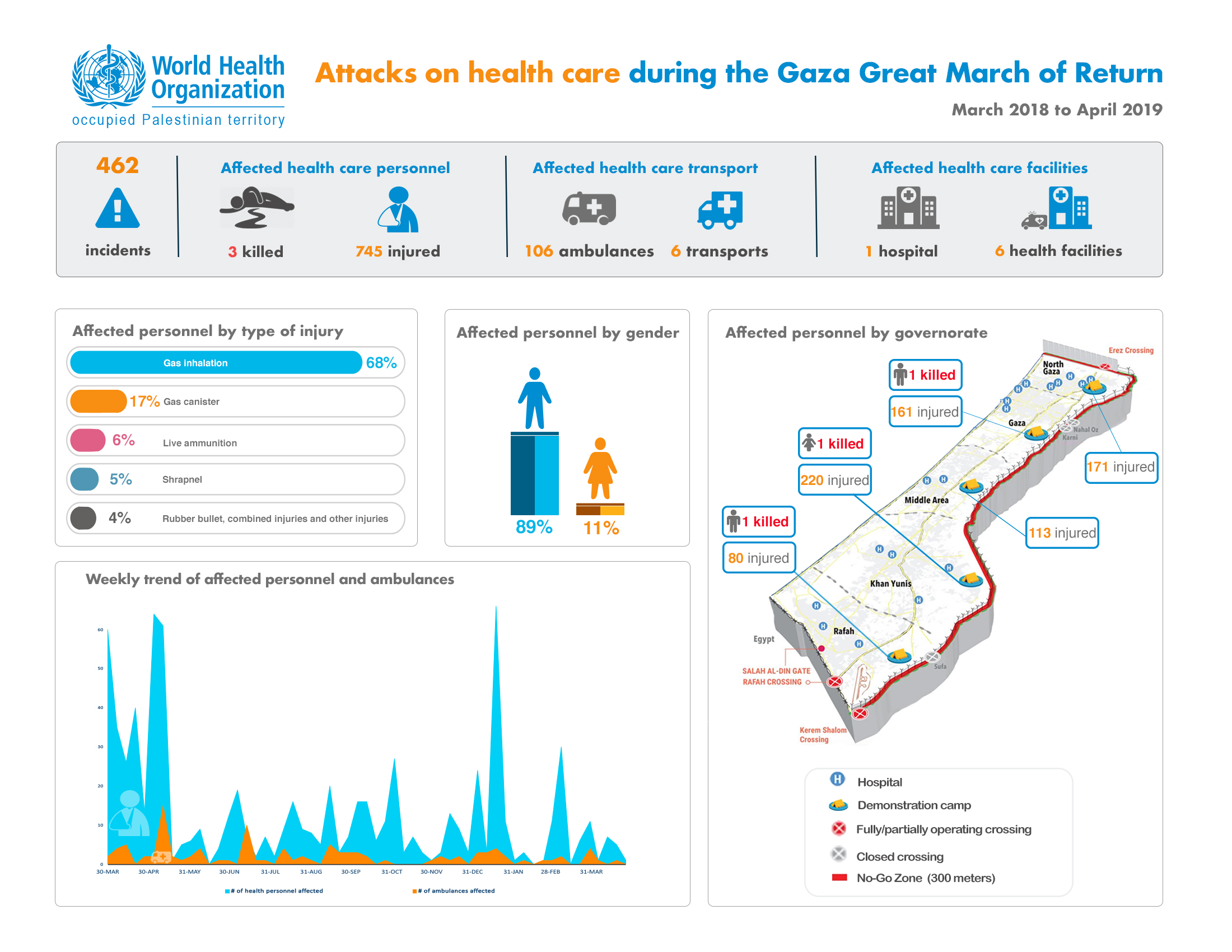
UN Special Coordinator visited WHO solar electrification project in Gaza
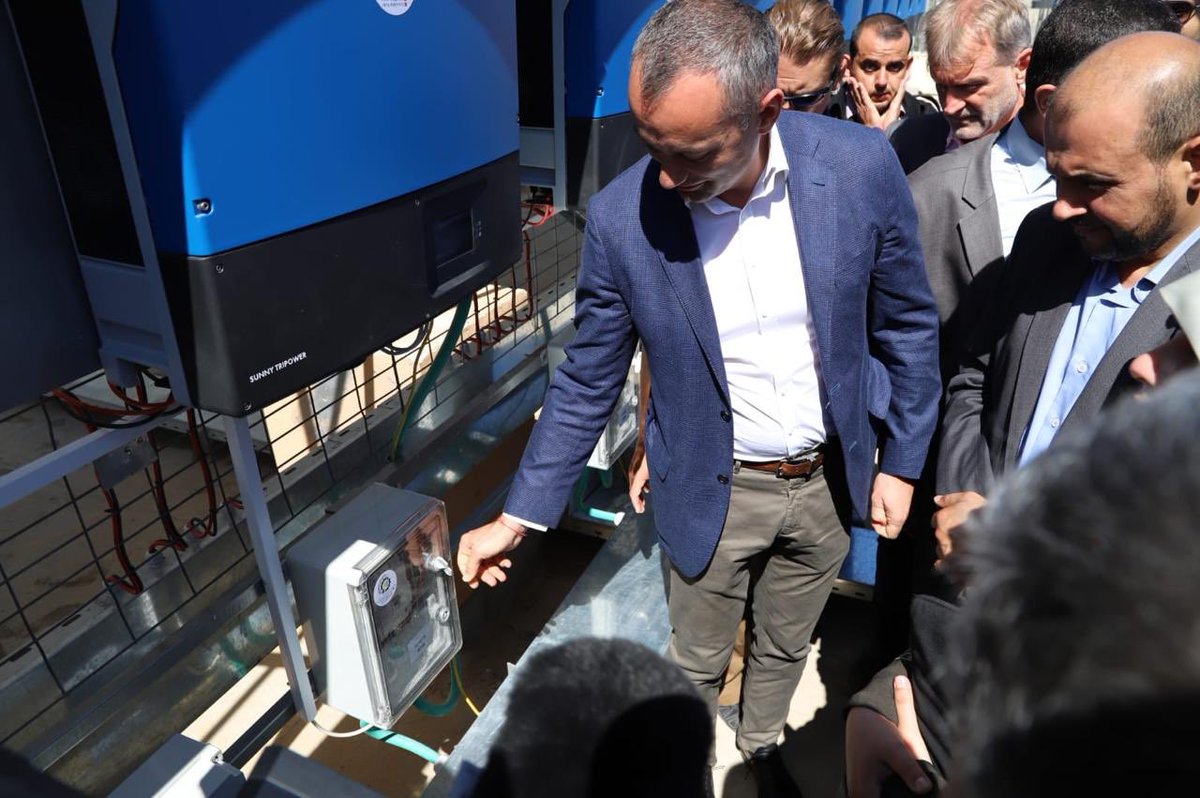 Nickolay Mladenov visiting solar plant at Nasser hospital in Gaza15 May 2019, Gaza - UN Special Coordinator for the Middle East Peace Process Nickolay Mladenov visited a solar electrification project at Nasser hospital in Khan Yunis, Gaza. The project is implemented by the World Health Organization (WHO) with financial support from the Government of Japan. It aims to contribute to the continuous functioning and resilience of the hospital by equipping it with solar panels as an alternative source of electricity.
Nickolay Mladenov visiting solar plant at Nasser hospital in Gaza15 May 2019, Gaza - UN Special Coordinator for the Middle East Peace Process Nickolay Mladenov visited a solar electrification project at Nasser hospital in Khan Yunis, Gaza. The project is implemented by the World Health Organization (WHO) with financial support from the Government of Japan. It aims to contribute to the continuous functioning and resilience of the hospital by equipping it with solar panels as an alternative source of electricity.
Gaza has been affected by protracted electricity shortages for over a decade. As a result, the health sector relies on donated fuel to run back-up generators in health facilities to sustain critical services when electricity is unavailable from the mains grid supply. The solar electrification project will reduce the health sector’s dependency on emergency fuel and, therefore, the impact of the electricity crisis on patients.
The official opening of the solar plant and the project handover ceremony between The Government of Japan, WHO and the Ministry of Health will take place in June 2019.
Attacks on health care during the Great March of Return in Gaza
11 April, 2019 - The World Health Organization has recorded an unprecedented 446 attacks on health care in Gaza since the start of the Great March of Return on 30th March 2018. These attacks have resulted in 3 deaths and 731 injuries among health workers. 104 ambulances and 6 other forms of health transport have been damaged, in addition to 5 health facilities and 1 hospital.
Ahmed, a 25 year old volunteer first aid worker with the Palestinian Medical Relief Society (PMRS), is among those hundreds of injured health workers. He was shot in both legs while providing care during the demonstrations in early May 2018. WHO spoke with Ahmed shortly after, and he discussed the impact of his injury: “Physically I’m feeling better, but mentally I feel destroyed. It’s hard to believe that I was shot. As paramedics and volunteers helping the injured we should be protected. I was wearing a vest that clearly showed I am a health worker. I was shot providing care to someone who was suffering with teargas inhalation. Imagine.”
In addition to personal risk and damage to health care, health workers also face substantial barriers to carrying out their work: firing between health workers and those injured prevents or hampers access and witnessing such events has significant implications for longer term mental health and continued work.
WHO reiterates its call for the protection of health workers and health facilities. Health care is #NotATarget.
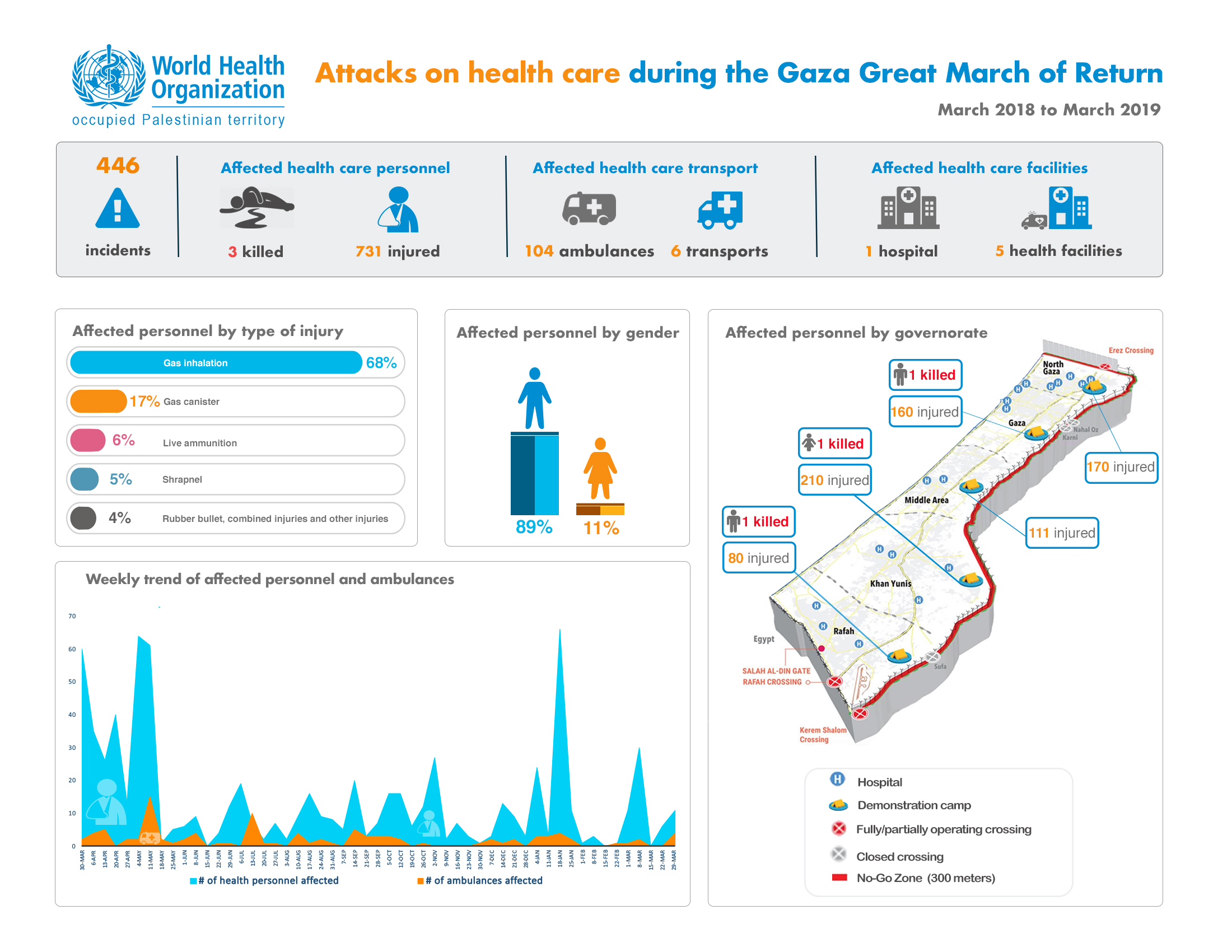
Download infographic: Attacks on health care during the Gaza Great March of Return
